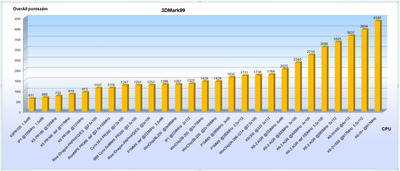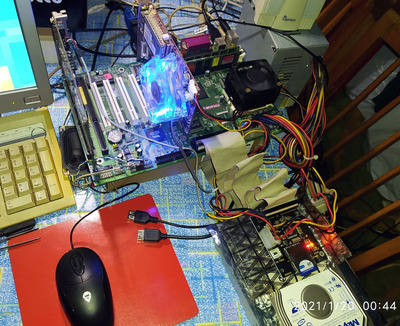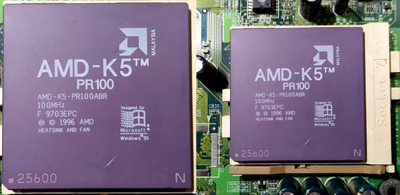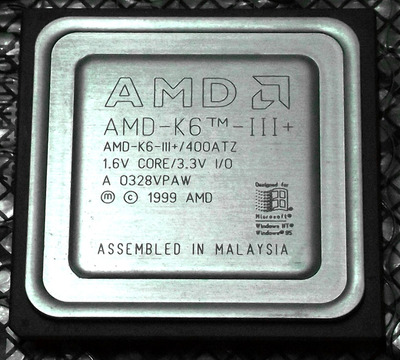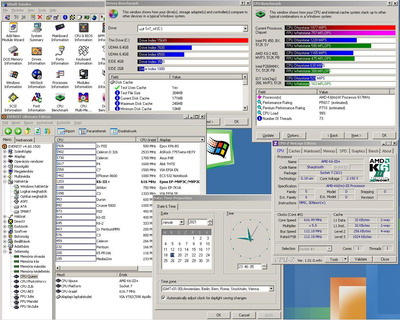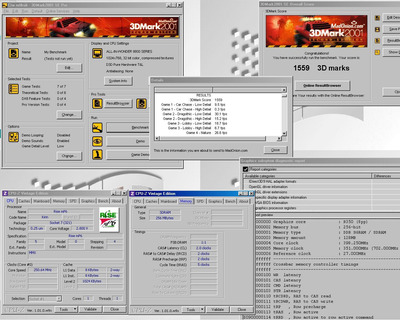You can't even fully patch Windows 7 on an AXP. By the time of the AXP you could still run basically anything you wanted (XP inc […]
Show full quote
ElectroSoldier wrote on 2024-02-08, 18:37:
Maybe in 10 years time those sockets will be considered vintage and they will count, but we are having this conversation today and I struggle to put the Athlon XP 3000+ in the same age classification as a 486 or the original Pentium processor.
You can't even fully patch Windows 7 on an AXP. By the time of the AXP you could still run basically anything you wanted (XP included) on a Pentium Classic, albeit slowly. They're even separated by less than a decade. It's been over 20 years since the AXP 3000+ released.
Its lack of SSE2 and thus incapability for modern software makes it a hell of a lot more vintage than any Pentium 4 at least, and consensus seems to definitely be in favor of the Pentium 4 as retro. Even a Willamette P4 has SSE2 and so could run basically a modern OS and software stack. Windows 11 excluded.
I'm not gonna argue in favor of AM2/+ as retro since there are people actively willingly using those systems with modern software stacks, I think my great aunt is one. I do, however, think it's very interesting to circumvent the "vintage" part of the thread's question and illustrate, when possible, that modern socket-compatible motherboards sometimes have as much (or more!) of an uplift than the golden standard example Socket (super or not) 7 that often gets thought of. It's easy to overlook by applying nostalgia logic, especially considering CPU speed climbed so fast so quickly back then.
Sock.7 came out around 1995 and was more or less abandoned about 1999 with the Athlon series, and as such I'd say AM4 (note again: not at all saying it's retro, it's obviously not) achieving a similar-ish (better if multithreaded) uplift but having been supported for coming up on a decade at this point, is if anything an even more impressive show of platform longevity than a single 4-year socket riding the tiger with Moore's Law and introducing random voltage regulator incompatibility the whole while.
I could buy an A320 board right now and throw a 5700x3d in it, which released a week or so ago, about 8 years after the launch of AM4, no modding required. VRMs might throttle under load but the CPU won't blow up and the BIOS will probably support the new chip, after maybe an update flash with an older chip to get it up to a newer (OFFICIAL) BIOS. Could the same be said of an early S5/S7 board?
I've kind of rambled a bit but I hope I made my (two) points.
It's a fair admission that the entry to 'retro/vintage' has gotten slower these days, I would no way argue that any 10 year old CPU is retro unless it's Bulldozer, and that's just because nobody in their right mind should be using Bulldozer 😜
But I think 20 years is plenty. The AXP 3000+ is above legal US drinking age. High school graduates are younger than those CPUs, 4-year college graduates will be soon. You can't run anything modern on it. Daily driving it would be an experiment in CBT, if it's even possible at all. It's vintage. You're just old, which is fine. I will always see the i7 4790k as high end and shiny. Our mental framing of these things decides how we categorize these things, even when it is based in pure irrationality.
Ultimately I think the question "which socket saw the biggest increase in horsepower" is a proxy to "what platform had the best long term support" and by a long shot, if we exclude the "vintage" mark, it is AM4.
Within the "vintage" mark it will be entirely down to what is and is not vintage, and so cannot be answered in any meaningfully concrete way.


